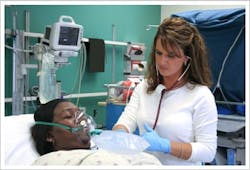Advances in technology have been improving our quality of life, including the quality of our healthcare, for quite some time.
The Henry Ford Hospital uses iPads and Skype for remote patient assessment.
While innovations like these and many others certainly brought an improvement in a patient's medical experience and ease of care, they could not eliminate one problem that still frustrates doctors and nurses every day: Preventable hospital error.
Preventable hospital error kills over 50,000 people every year in the US alone, harms one in seven patients hospitalized under Medicare, and costs the US government over $4B per year.
This is a problem that can, and is, being fixed with a little ingenuity and application of technology made available by the Industrial Internet of Things (IIoT).
As Stan Schneider, President and CEO at Real-Time Innovations (RTI) and Smart Industry Advisory Board member, points out in his recent blog for the Industrial Internet Consortium, there is currently no way to combine the information being supplied by the many, many devices used to monitor patient status, deliver medication, and provide life support. Soon, Stan states, “connectivity and intelligent distributed medical systems will dramatically improve this forever.”
One key risk moment where preventable errors can occur is when a patient is transferred from surgery to the Intensive Care Unit (ICU). During this transfer, the drug delivery and monitor constellation must be copied from the operating room to the ICU. Today, this is done manually. “Consider if instead these systems could work together in real time,” Stan explains. “The OR devices, working with the smart algorithm processor, could communicate the exact drug combinations to the Electronic Medical Record (EMR). The ICU system would check this data against its configuration.” A connected system such as this would eliminate dozens of opportunities for errors.
Automated record keeping would also go a long way to avoid preventable deaths, as would the faster information retrieval such a system would allow.
In these ways, and many others, the IIoT can improve healthcare and bring immediate lifesaving benefits to patients. To see more details of the IIoT technology and standards being employed to make these and other improvements in hospital care, see the RTI whitepaper, “How the Industrial Internet of Things Can Save 50,000 Lives a Year.”




